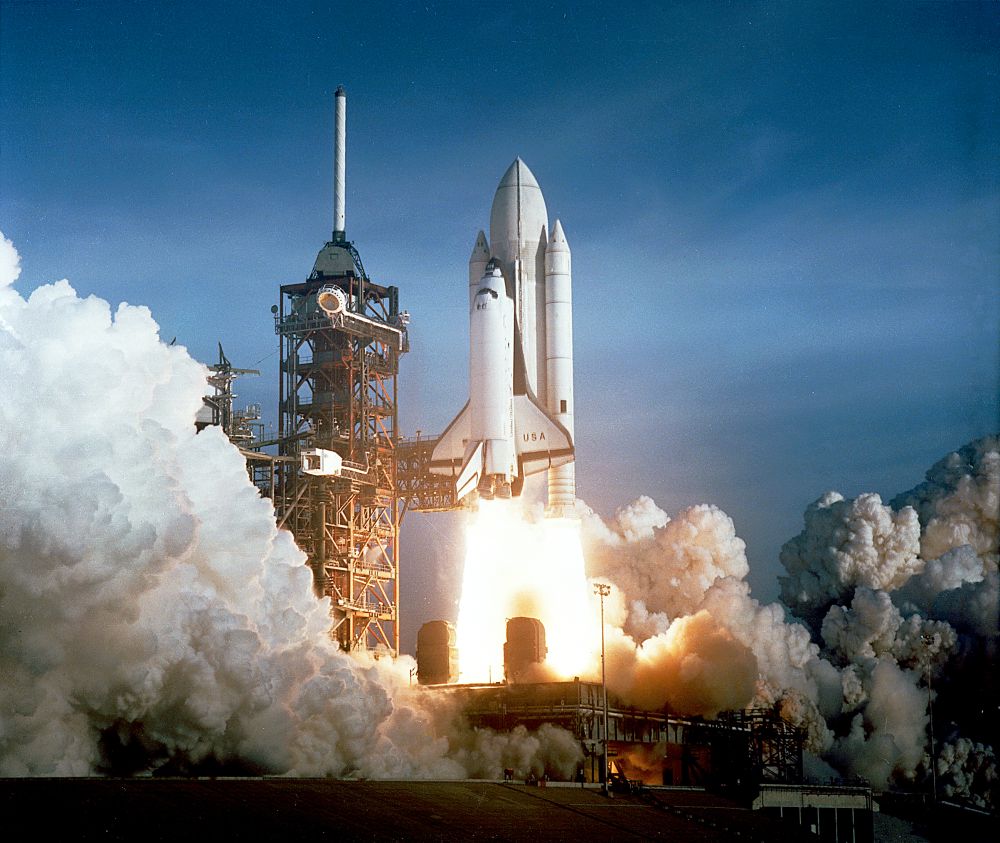
Thirty-five years ago, on 12 April 1981, the first winged orbital space vehicle carrying human pilots was launched from Pad 39A at the Kennedy Space Center (KSC) in Florida. Aboard Columbia for STS-1—the long-awaited maiden voyage of the shuttle era—were Commander John Young and Pilot Bob Crippen, tasked with spending two days evaluating the performance of the most complex manned spacecraft in history. Since it was formally approved for development, almost a decade earlier, the reusable shuttle had been directed to a mandate of flying routinely, transporting satellites, laboratories, and people into low-Earth orbit, but before it could be declared “operational” it would have to perform four Orbital Flight Test (OFT) missions, of which STS-1 was the first.
It would also mark the first occasion in the history of the U.S. space program that a crew had been aboard for the inaugural voyage of a new spacecraft; the Mercury, Gemini, and Apollo spacecraft had all flown unmanned, before their systems were trusted with human pilots. Within the ranks of the astronaut corps, opinions were mixed. Fred Haise saw an unmanned first flight as trickier than a manned one. “It would have been very difficult,” he told the NASA oral historian, “to have devised a scheme to have flown unmanned. I guess you could’ve used a link and really had a pilot on a stick on the ground … but to totally mechanically program it to do that—and inherent within the vehicle—would have been very difficult. With a crew on-board, able to handle the multitude of things that you could work around, inherently made the success potential of a flight much greater.”
Others were more sceptical. “I didn’t see any need in risking humans and I didn’t think humans would be as proficient as automated equipment,” recalled Henry Pohl, then-head of engineering and development, in a NASA oral history. “By that time [the late 1970s], we had the know-how and we could build robots or the automated equipment that can detect things long before a human can detect it and I thought the vehicle was going to be so difficult to land that we really ought to land it with automated equipment.”
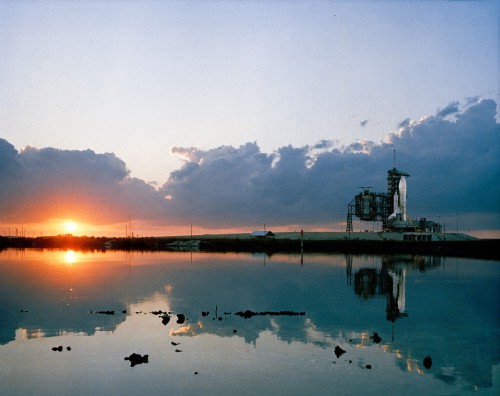
When Young and Crippen were named in March 1978 as part of a “pool” of pilots to fly the OFT shuttle missions, it was apparent that they might not survive Columbia’s first mission. Three years later, shortly before heading to the Kennedy Space Center (KSC) in Florida, Young and fellow astronaut Joe Allen went to lunch in the cafeteria at the Johnson Space Center (JSC) in Houston, Texas. Young had no money, so Allen paid for him. Afterwards, Young insisted on paying him back. Allen laughed and told him to forget it. “No,” replied Young. “You don’t go fly these things when you got debts.” In Young’s mind, he would fly into space on arguably the most hazardous piloted mission in U.S. history with all of his earthly debts settled.
On 29 December 1980, Columbia—attached to her bulbous External Tank (ET) and twin Solid Rocket Boosters (SRBs)—rolled out from the Vehicle Assembly Building (VAB) to Pad 39A for final processing operations. In late February, her cluster of three main engines were successfully test-fired for 20 seconds, and liftoff was provisionally scheduled for no earlier than 17 March 1981. However, numerous technical obstacles and a human tragedy conspired to push the STS-1 mission into April. Firstly, technicians needed to repair a section of debonded insulation on the ET, which pushed the launch to 5 April, after which a strike by Boeing machinists enforced a further delay to 10 April. Several technicians were left unconscious by a dangerous accumulation of nitrogen gas, whilst working in the shuttle’s aft compartment, leading to the tragic deaths of John Bjomstad and Forrest Cole.
T-0 on 10 April was timed to occur at the opening of a 6.5-hour “window,” which opened at 6:50 a.m. EDT and whose parameters were dictated by the requirement for adequate lighting to satisfactorily photograph Columbia’s ascent and preserve the option for a daylight landing opportunity at White Sands Missile Range, near Alamagordo, N.M., should a launch abort require Young and Crippen to perform an emergency landing after one orbit.
Shortly before 4 a.m. EDT on 10 April, the two astronauts boarded Columbia for what turned out to be a relatively uneventful countdown, until its final stages. Then, at T-9 minutes, during the final programmed hold in the countdown, a problem cropped up in one of the shuttle’s General Purpose Computers (GPCs). It was described by NASA as “a timing skew”; in effect, the backup flight software was unable to synchronize itself with the primary set. Unlike earlier manned spacecraft, the shuttle was totally reliant upon its computers to run the main engines, move the elevons, control its heading, and operate the Orbital Maneuvering System (OMS). The units were so critical that five GPCs were carried: four primaries, which ran the same software and “voted” before issuing commands, and a backup. If one of the primaries disagreed with the others, it was “outvoted” and considered faulty. The backup computer contained a different set of flight software, so that if all four primaries became corrupted, it could take over.
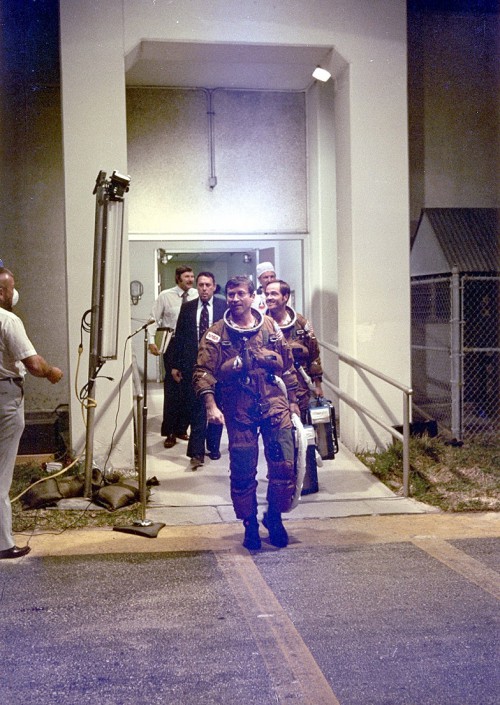
Taking advantage of the lengthy window, T-0 was rescheduled for 10:20 a.m. EDT, as engineers wrestled with the software, but when a solution proved elusive it was prudently decided to stand down for 48 hours. Later that evening, the problem was isolated and the countdown resumed on the 11th. “The software,” recalled astronaut Gordon Fullerton in a NASA oral history, “became the biggest stumbling block. The software in these computers not only control where you fly and the flight path, but almost every other subsystem! Getting the software wrung out and simulators writing the checklists … we didn’t really have it nailed down by STS-1. There were a lot of unknowns, [but] you just finally have to set a launch date and say ‘We’re going to go’. You cannot be 100 percent sure of everything.”
After spending the 11th maintaining their proficiency, the astronauts headed into the suiting-up room in the small hours of the 12th, to be greeted by the result of the suit techs’ humor. “John Young made a big deal about the size of the American flag on his suit,” remembered technician Jean Alexander in a NASA oral history. “It came in with kind of a small version and they got several sizes before he was satisfied and it was kind of a joke, so on launch morning there was a motel that we stayed at Cocoa Beach and they had this huge flag on a pole [outside] a real-estate office next door. One of the suit techs that was down there for launch talked the real-estate people into letting him take that flag down and he took it to the suit room for suit-up morning and had it actually cover one whole wall! When John walked in, he said ‘John, is that big enough?’” The episode lightened the mood sufficiently for what was about to come.
Unlike their previous attempt, the countdown on 12 April 1981—which also happened to be the 20th anniversary of Yuri Gagarin’s pioneering orbital flight—proved charmed, which came as a pleasant surprise to Crippen. As the clock paused at T-9 minutes, Launch Director George Page told the men that he would extend the “hold” slightly, to ensure that the team were sufficiently calm and focused for the events ahead. “It was for a few minutes,” Crippen noted, “to get relaxed.” At T-5 minutes, Crippen started the shuttle’s Auxiliary Power Units (APUs) and verified their nominal performance.
The final minute was laced with the excitement and technobabble of the first flight of an entirely new U.S. piloted orbital spacecraft, which has not been seen since, and which will not be seen again until either Boeing or SpaceX lofts its first crewed CST-100 or Crew Dragon, sometime in 2017. “The firing system for the sound suppression water system will be armed just a couple of seconds from now,” came the call from the launch commentator. “T-45 seconds and counting…the Development Flight Instrumentation recorders are on … T-35 seconds, we’re just a few seconds away from switching to the redundant set sequencer … T-27 seconds, we’ve gone for redundant set sequencer start … T-20 seconds and counting … T-15 … 14 … 13 … 12 … T-10, nine, eight, seven, six, five, four … we’ve gone for Main Engine Start … ” as a shower of sparks from the hydrogen burn igniters gave way to a sudden, low-pitched rumble and a sheet of translucent orange flame, “ … we have Main Engine Start … ”
Six seconds before 7 a.m. EDT on 12 April 1981, anything slumbering on the Space Coast was slumbering no more, as the rumble of Columbia’s engines intensified into a mighty crescendo. Almost as quickly as it had appeared, the orange sheet of flame was gone, to be replaced by a trio of dancing Mach diamonds, as supersonic exhaust gases surged from the engine bells. A vast cloud of smoke quickly obscured the entire vehicle. The commentator’s next few words were drowned out by the ear-splitting staccato crackle and brilliant fireshow of the SRBs, which ignited precisely at T-zero, and precisely on the hour. From the press site, Columbia seemed to punch its way upwards from the smoke, accompanied by the shouts, whoops, and cheers of 3,500 spectators and hundreds of thousands more who were watching on television. “We have liftoff of America’s first Space Shuttle … and the shuttle has cleared the tower … ”
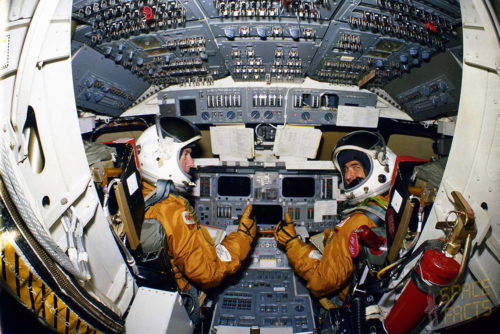
From their seats, Young and Crippen later recalled that Columbia rocked, perceptibly, backwards and forward, accompanied by a sharp increase of noise inside the cabin. Crippen would remark that, although the roar of the main engines definitely got their attention, it was the punch-in-the-back ignition of the SRBs which convinced and assured them that they were really going somewhere. For the first few seconds, as they cleared the tower and soared into the clear Florida sky atop two dazzling columns of flame, the cockpit instruments were blurred by the vibrations, though not unreadable. By the time that the shuttle rolled over onto her back, 10 seconds into the flight, and established herself on the correct heading for a 40.3-degree-inclination orbit, the two men reported that the vibrations had lessened to a point that allowed them to read their instruments without problems.
“Roll Program!” radioed Young as Columbia performed an axial rotation to orient itself onto the proper flight azimuth, seemingly “rolling” onto its back.
“Roger, Roll,” replied Capcom Dan Brandenstein.
At the post-flight debriefings, Young told engineers that Columbia’s ascent was considerably more rapid than he had experienced during his two Saturn V launches to the Moon. Analysis also showed that STS-1 had caused significant damage to Pad 39A, which could have been catastrophic: The shockwaves produced by the main engines and the SRBs had buckled a strut linking Columbia with the ET. Had the strut failed, it was subsequently determined, the result could have been a Loss of Crew and Vehicle (LOCV) event and steps were taken to strengthen the struts in readiness for future missions.
Climbing through the low atmosphere, the wind noise outside gradually intensified into something which could only be likened to a screaming. A minute into the flight, as Columbia approached an altitude of 9.3 miles (15 km), she passed through a period of maximum aerodynamic turbulence, which required the GPCs to throttle the engines back to just under two-thirds of their rated thrust. The passage through this period, nicknamed “Max Q,” was accompanied by an increase in the noise and vibration of the engines, although their performance remained within structural expectations. Shortly thereafter, the three engines were throttled back up to full power.
“Columbia, you’re Go at throttle up,” radioed Brandenstein.
“Roger, Go at throttle up,” acknowledged Young.
The sound from the boosters, meanwhile, remained sporadic and decreased to virtually nothing as the time approached, 132 seconds into the ascent, for their separation. Shortly before the SRBs burned out, Brandenstein, told the crew that they were now “negative seats,” meaning that Columbia was too high to use the ejection seats. Fortunately, the vehicle was performing beautifully. In his 2006 autobiography, Riding Rockets, veteran astronaut Mike Mullane recalled listening with relief as each abort-boundary call was passed up by Brandenstein; each call signaled “the sweet song of nominal flight.”
When the separation motors fired and the SRBs fell away, Young and Crippen reported a bright, orange-yellow flash, which appeared to stream up in front of the shuttle’s nose and back above the front windows. Separation of the boosters was accompanied by a harsh, grating sound, although both performed nominally, parachuting down into the Atlantic Ocean for recovery and reuse. With them gone, the astronauts now found it much easier to flip switches in the cockpit. At this point, the so-called “T-Fail-Pitchover” maneuver was executed, placing the horizon in their direct field of view for the first time, and Young and Crippen saw penny-sized to fist-sized particles flooding past the windows.
“What a view! What a view!” radioed Crippen, jubilantly.
“Glad you’re enjoying it,” replied Brandenstein.
Young and Crippen flew on for six more minutes after SRB separation, reaching Mach 19, at which point the engines were throttled back to maintain around three times the force of terrestrial gravity in order not to over-stress the vehicle. Throughout the entire ascent, the commander’s heart rate rose no higher than 90 beats per minute, whereas that of rookie Crippen peaked at nearly 130. The first flight of a fleet of shuttles which would revolutionize U.S. exploration of the heavens had begun, and a 30-year chapter in the history books had begun. After STS-1, Young would quip that he was so old that his heart would not beat any faster. However, Flight Director Neil Hutchinson had another explanation: The calm, cool Young must have been asleep the whole time!
The second part of this article will appear tomorrow.
Want to keep up-to-date with all things space? Be sure to “Like” AmericaSpace on Facebook and follow us on Twitter: @AmericaSpace




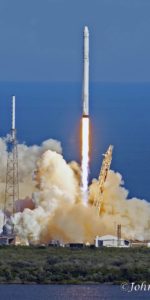
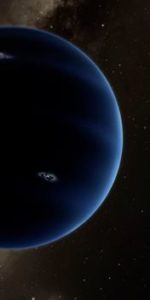
3 Comments
3 Pings & Trackbacks
Pingback:‘To Come to California’: 35 Years Since STS-1 Inaugurated the Space Shuttle Program (Part 2) « AmericaSpace
Pingback:‘Short-Lived Record’: 20 Years Since the Record-Setting Mission of STS-78 (Part 2) « AmericaSpace
Pingback:Astronaut Scholarship Foundation to Honor 35th Anniversary of First Shuttle Missions « AmericaSpace